7 Cool Seabirds on Cape Ann | Birding In Rockport & Gloucester MA
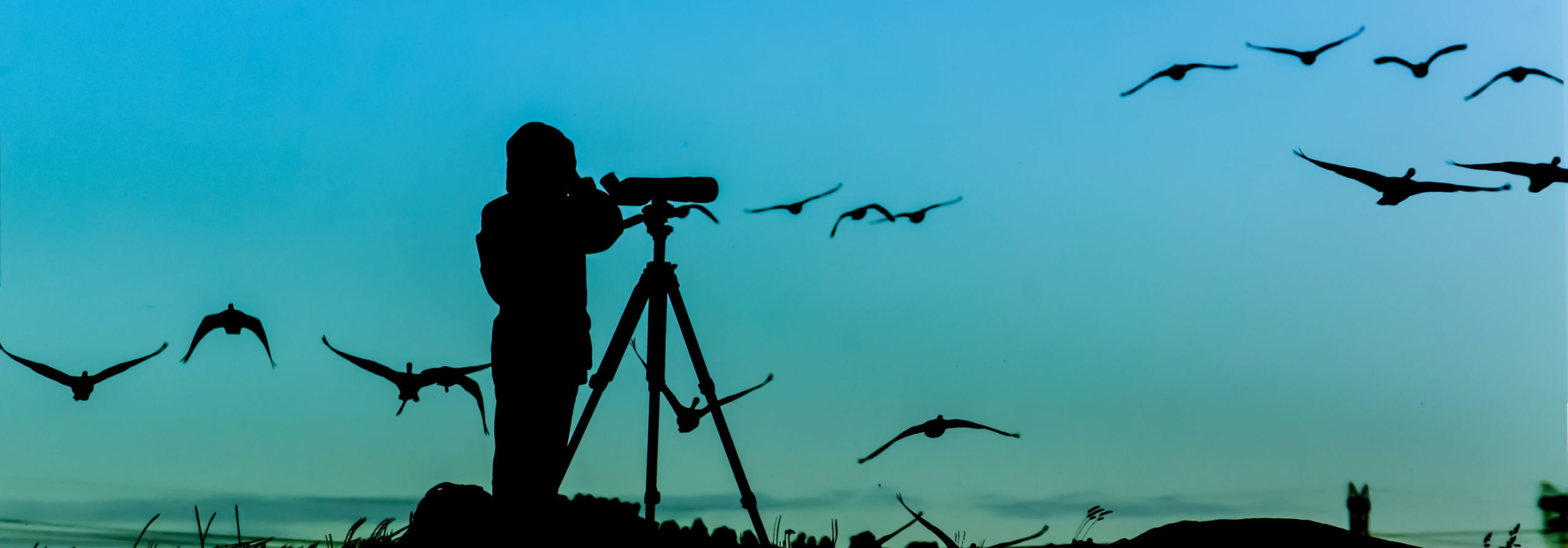
OG Snowbirds That May Bring Out Your Inner Birder
Whether you’re an avid birder, a novice birder, or you completely despise birds, Cape Ann is a great place to visit in just about any season. If you despise birds though, we think you may want to dial it back a little bit. You’ve gotta pick your battles.
Cape Ann (composed of Gloucester, Rockport, Essex and Manchester) receives annual visits from an incredibly diverse array of seabirds. Each season brings with it a vibrant new cast of characters to track, photograph and learn about. Whether it’s your first time birding or you have filled waterproof tomes with heroic tales of your birding exploits, there is truly something for everyone.
To whet your birding palate, this article will delve into 7 cool seabirds that you can find right here on Cape Ann.
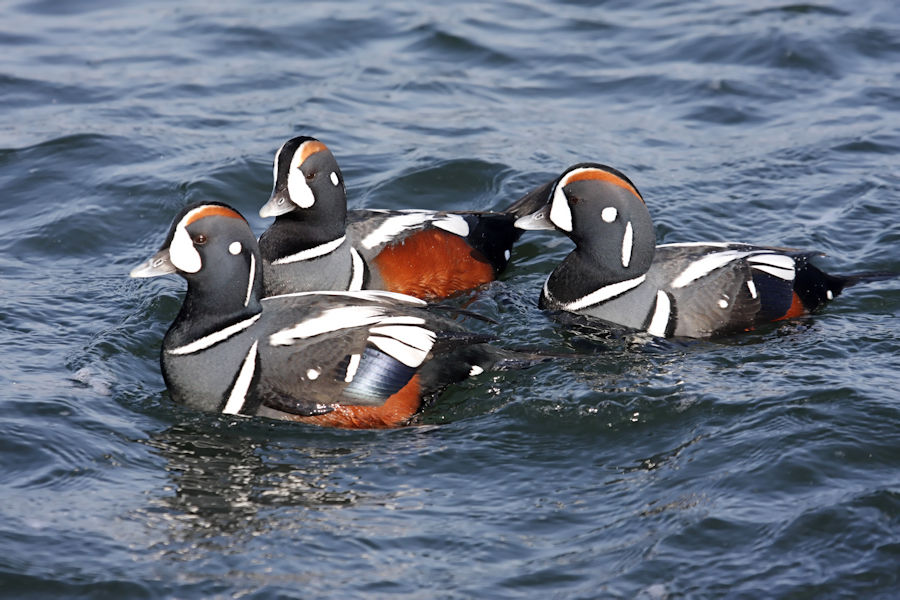
The Harlequin Duck, also referred to as the “Harley” “Squeaker” and “Sea Mouse,” due to its unique call, is quite content with the snowbird lifestyle. The ducks fly south from the arctic region in the winter months and call the coastal waters of Gloucester and Rockport, Massachusetts home.
During its breeding season, the Harlequin seeks out mountain rivers and streams in Greenland, Canada, Alaska, the pacific northwest, and eastern Russia. Interestingly, Harlequin ducks are monogamous and actually pair with long term partners for mating.
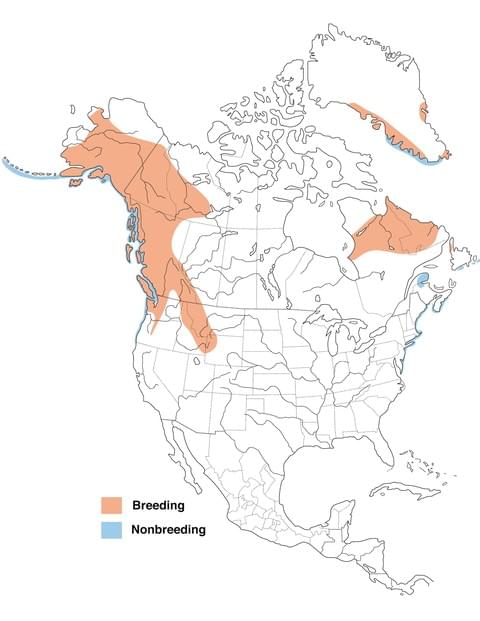
The male Harlequin duck is easily identified by its striking plumage. Slate gray feathers with white stripes, chestnut sides, a crescent stripe by his eye, and a white dot on his cheek make this duck stand out.
The female, as with many other bird species, has muted gray tones.
Coveted by duck hunters and hunted by eagles, the Harlequin duck can be a tough one to catch. That’s because the Harlequin duck is an excellent diver and can dive to depths of 70 feet and remain underwater for upwards of 40 seconds. Diving is how the ducks acquire their food and it certainly comes in handy in survival situations.
Speaking of food, the Harlequin has a palate that would rival a French Chef. The Harlequin diet includes fish eggs, mussels, crabs and snails. Sounds like a fantastic diet to us!
Harlequin ducks have been spotted all across Cape Ann. When hunting for the Harley keep in mind that they love rough waters and rocky coastlines.
One final fun fact about the Harlequin is that it is the only species of its genus and fossils have been found that are over 4.8 millions years old By contrast, the oldest human remains are in the 300,000 year old ball park. Puts human life into perspective!

A king amongst mere fowl. Another striking seabird that likes to winter on Cape Ann is the King Eider.
The name king was given to this duck due to large crown-like knob on the male bill. The male King Eider is easily identifiable. In addition to the large knob, look for the red and orange bill, blue head and green cheek. Similar to the female Harlequin, the female King Eider has more traditional tones of rusty brown and black.
Like the Harlequin, the King Eider feeds on shellfish and can forage on beds up to 80 feet deep.
When it comes time to nest, the King Eider prefers the barren arctic tundra in area such as Alaska, Canada, Greenland, Svalbard and Russia.
During the winter months they can be found on rocky coastlines, like Cape Ann and can be found in large flocks.
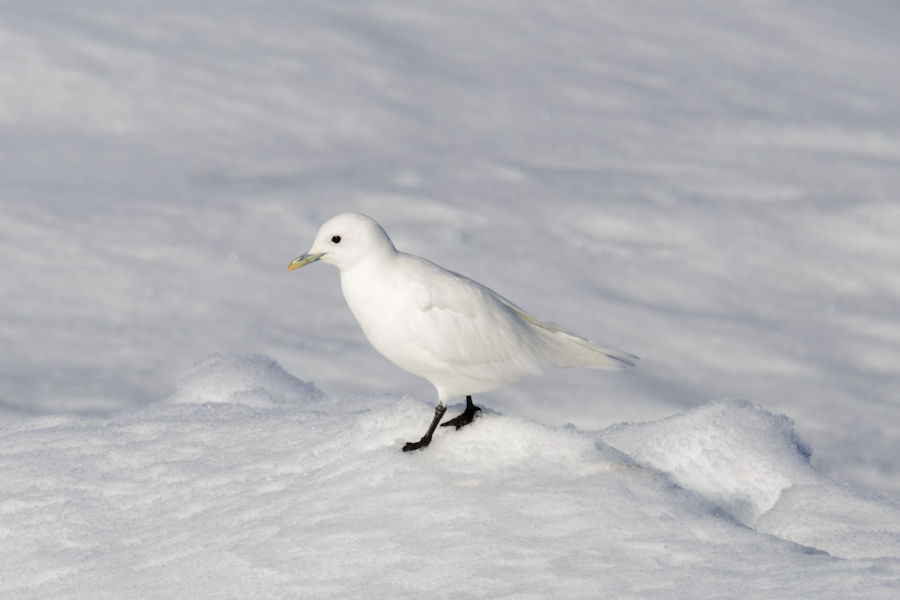
Head to just about any beach and you will find a band of coastal thugs known as seagulls. They are wanted in many counties across the Commonwealth for theft of everything from French fries to beachgoer dignity.
But a cousin to this band of thieves, known as the Ivory Gull visits Cape Ann in the winter and clings to its icy shoreline.
The Ivory gull is unmistakable from its striking white plumage. Birders note that the Ivory Gull has more pigeon-like dimensions that a gull which can really be seen in the picture above. Don’t tell Iron Mike though!
Like the polar bear, the Ivory gull is tied to arctic regions and can be found in icy coastal locations. The gulls feed on small fish and other marine life but they will also scavenge carcasses, such as seals, left by the polar bear.
This beautiful bird breeds in the small islands in the northern arctic and the species, like many others, has been impacted by the recent reduction in polar ice. The bird can be found along the rocky coastal outcroppings along Cape Ann.
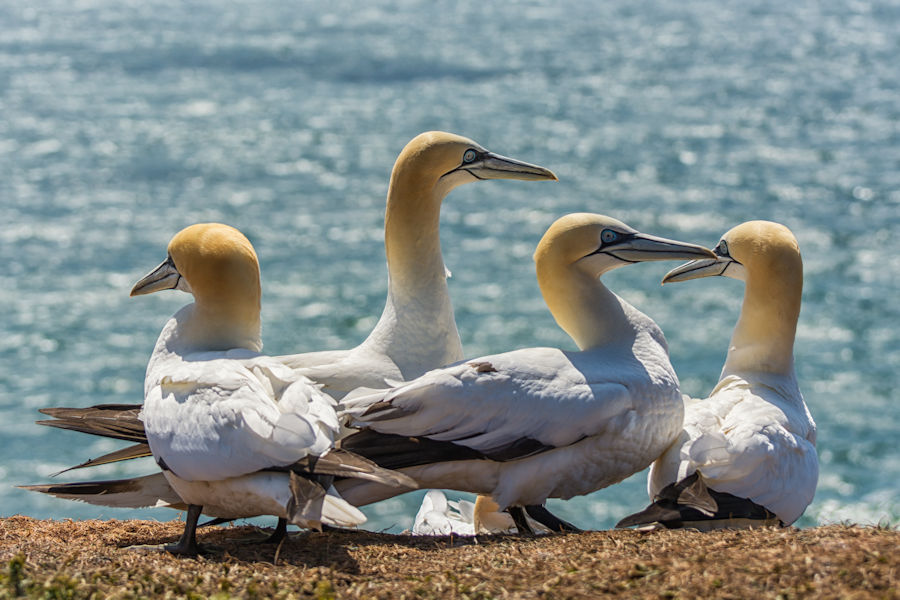
Another fascinating bird that you can observe during the winter on Cape Ann is the Northern Gannet.
One of the most prolific hunters, amongst waterfowl, the Gannet are dive bombers that hit the ocean at speeds of 60 MPH in pursuit of mackerel, pollack, herring, and other prey.
Gannet are specially adapted to hit the water at such great speed. Their skulls are extremely hard, they have air cells between their skin and muscle to absorb impact, and they tuck their wings before impact making them almost spear-like.

The Gannet also have incredible eyesight. They have binocular vision and their eyes are positioned in the front of their skulls. Most birds eyes are positioned on the sides of their skulls this gives them better all around vision but it does not help when hunting by sight. The forward facing eyes of the Gannet allows the bird to zoom in on their prey from afar. Here is an incredible video of the Gannets in action.
Cue up Wagners Ride of The Valkyries! We think it’s the perfect soundtrack for these incredible birds.
One of the largest species of sea birds, the Northern Gannet wing span is 6 feet. Both sexes look similar and they can be recognized by their long necks and long pointed bills. They nest on both sides of the north Atlantic in numbers as high as 150,000 to 200,000 birds. It’s truly a sight to behold, but we are lucky to have them as visitors to our neck of the woods.
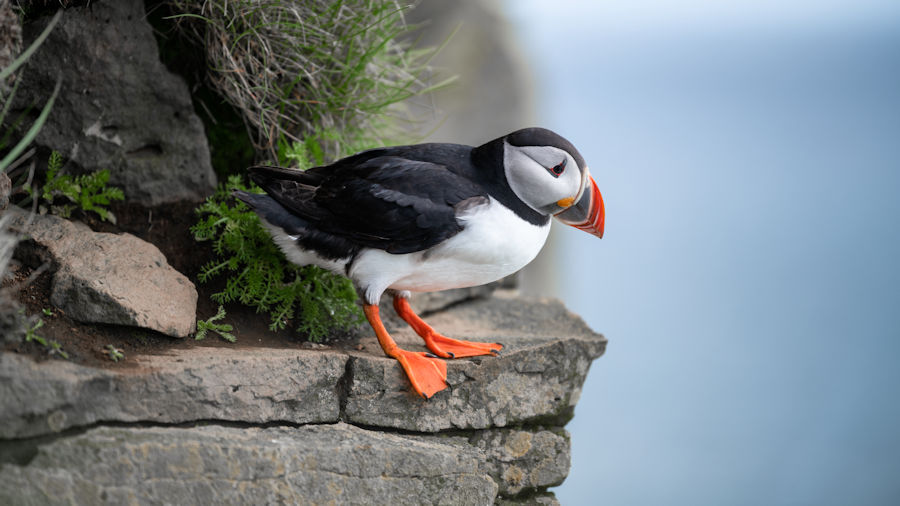
Ok, so this is going to be a rarer find on Cape Ann, but we had to include it because they do visit and they are just so adorable. On the spectrum of cuteness these little guys are somewhere between golden retriever puppy and pygmy hedgehog.
Scientifically speaking, Puffins are essentially winged-penguins. The Atlantic Puffin is about 13 inches long, with a 21 inch wing span and a weight of about 13 ounces.
They breed in coastal colonies and, like the Harlequin ducks, Puffins form long-term relationships. In fact, once the eggs are laid both the male and female will take turns incubating.
If you are truly passionate about the Puffin, the place to visit is Iceland. We saw a number of Puffins on our visit to the island. Iceland is actually home to approximately 10 million Puffins. Pretty incredible when you consider the human population on the continent is approximately 356,000!
Puffins have been spotted out on Stellwagen Bank and there was actually large group of 61 Puffins spotted off of the coast of Cape Cod in January, after a Nor’easter.
Since 1973 the National Audubon Society has been working to bring the Puffin back to its natural habitat off the gulf of Maine and this has helped to increase the size of the Puffin population in the area. These incredible efforts should only lead to an increase in Puffin sightings on Cape Ann.

Following up the Puffin is no small task but the job has to go to someone and that someone is the Pacific Loon. New Englanders have heard that distinctive Loon call quite frequently because it was a central part of the Loon Mountain ski area advertising.
That eerie call that we often associate with Loons is the call of the Common Loon. The Pacific Loon call is a bit different and actually sounds more like a toddler at times. Here is a link to all of the North American Loon calls.
The Loon is easy to recognize. Breeding adult loons have those piercing red eyes, dove-gray heads, and bodies marked with sharp white lines.
The Pacific Loon is actually a slightly heavier loon which makes it less buoyant and gives it the ability to dive deeper for fish. The trade off, however, is that the Pacific Loon takes 30-50 yards of water to get airborne. They cannot even take flight from land. While its more agile cousins can spring right into the air.
Here is the amount of running room, the Loon needs to take flight:
The Loon nests in the arctic and subarctic freshwater lakes and spends its winters in coastal ocean locations along with local bays and estuaries. You will find them off of the coast of Cape Ann basking in peaceful winter coastal glory.

Large black water birds, the Great Cormorant has a lifespan of about 11 years. You can recognize them by their long thick necks and hooked bills. Their feathers are black and they have a white throat and some yellow around the bill.
The Cormorant dives for bottom dwelling fish and can be found on rocky coastlines and even in Rockport Harbor. If you’re lucky you may even be able to get a shot of the Cormorant with Motif#1 in the background.
These birds are pretty incredible and almost snake-like in their feeding habits. Their necks expand to ingest large fish whole. Check out this incredible video of a Great Cormorant ingesting a whole carp.
Although Cormorants dive for their food, their plumage lacks the waterproofing of ducks and loons so between dives you will find them on shore to warm up and dry off before their next hunt.
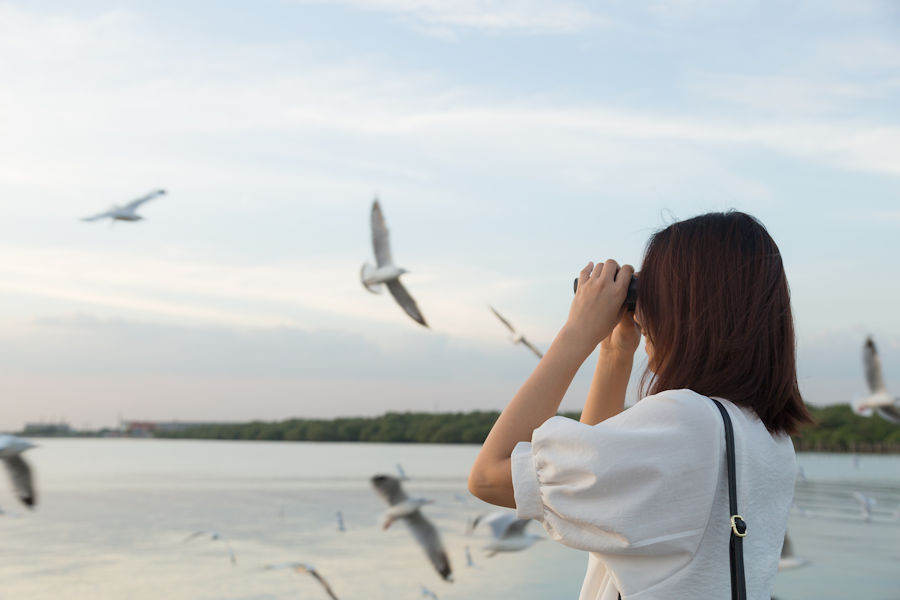
In addition to these 7 fascinating birds there are a variety of other species that you will find on Cape Ann including: the Common Eider, Common Murres, Dovekie, Thick-billed Murres, Razorbill, Red-throated Loons, Horned & Red-necked Grebes, Sandpipers, Common Gulls, Long-tailed duck and much much more.
In fact, Cape Ann is renowned as one of the best birding locations in the state of Massachusetts. For example, Rockport’s Halibut Point alone is home to over 276 identified species such as the Black-backed gulls, Herring Gulls, American Black ducks, Black Capped Chickadees, and Blue Jays to name just a few.
The trip to Rockport is worth is for the birding alone, but there are so many more things to do in Rockport that it is worth spending a night or two.
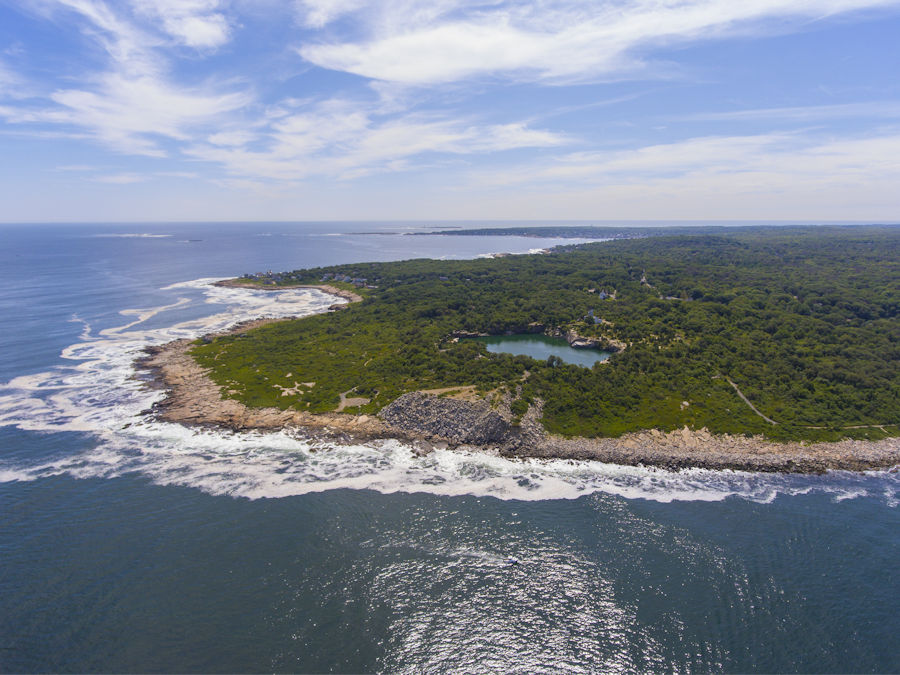
There are a number of fantastic locations for birding on Cape Ann. The coastline runs all around so you will be able to find a variety of seabird species all around Gloucester and Rockport. But for those who may not be as familiar with the area there are a few popular hot spots that are a great place to start.
Ocean Front Birding
The Headlands in Rockport
Halibut Point in Rockport
Niles Beach in Gloucester
Eastern Point in Gloucester
Birding On Trails
For those of you that would like to explore other species of birds outside of water fowl, Cape Ann has an extensive network of trails that are well worth your time to visit. Here are a couple that we like:
Ravenswood Park in Gloucester https://www.alltrails.com/trail/us/massachusetts/ravenswood-park-trail
The Dogtown Woods Circular in Rockport: https://www.alltrails.com/trail/us/massachusetts/dogtown-circumnavigation
The South Woods Loop in Rockport: https://www.alltrails.com/trail/us/massachusetts/south-woods-loop–2

For those looking to share their passion for birding with others or for the novice birder who is looking to learn and thing or two from the more experienced birders, the Cape Ann Chamber and 7 Seas Whale Watch co-host an annual winter birding excursion each year out of Gloucester.
7 Seas Whale Watch vessel Privateer IV sets out from Gloucester Harbor with bird enthusiasts. The journey leads out to Stellwagen bank a marine life sanctuary. There is an incredibly rich diversity of birds at Stellwagen from gulls and terns to gannets, cormorants and phalaropes.
There are bird experts aboard the boat help passengers identify different species. If passengers are lucky they may even be treated to a whale sighting or two at no extra charge!
The entire trip is about 4 hours and is well worth the price of admission. You can learn more about the Cape Ann Birding Trip Here.
Well that about wraps up this discussion about birding on Cape Ann. If you’re interested in learning more about birding we would suggest visiting the Audubon website and considering a trip up to broaden your birding knowledge and check out these 7 Cool Seabirds on Cape Ann.